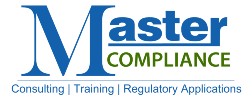Welcome to the second part of our three-part series on Regulatory Technology (RegTech) tools and the securities industry! As we discussed in our previous post, “RegTech: Surveillance and Monitoring,” more and more members of the financial services industry are using RegTech tools to effectively and more efficiently meet their regulatory compliance requirements. FINRA has identified five major areas in which RegTech tools are being applied: surveillance and monitoring, customer identification and anti-money laundering (AML) compliance, regulatory intelligence, reporting and risk management, and investor risk assessment. Today we will be focusing on customer identification and AML compliance RegTech applications.
Customer Identification and AML Compliance
Customer identification (also known as “know-your-customer” or KYC) and AML related rules and regulations are essential to assuring the legitimate and orderly conduct of financial markets. These rules enable both market participants and regulators to seek to identify and detect potential money-laundering and terrorist-financing activities, as well as expose securities fraud and forms of market manipulation.
However, customer identification and AML compliance also come with associated costs. Moreover, many market participants have suggested that the traditional solutions and methods for customer identification and AML monitoring may not always have been as effective as desired. Consequently, the financial industry is exploring using RegTech tools as a more effective option.
Certain RegTech firms have started introducing solutions for customer identification and AML compliance that are designed to use technology to develop more effective, efficient, and risk-based systems. Some vendors are offering RegTech tools that incorporate biometrics (unique physical characteristics, such as fingerprints, that can be used for automated recognition) to better identify and track customer activity. Some RegTech tools also offer the potential to conduct real-time transaction monitoring.
Other vendors are exploring the use of distributed ledger technology (DLT), also known as blockchain technology or distributed database technology. DLT involves a distributed database maintained over a network of computers connected on a peer-to-peer basis, such that network participants can share and retain identical, cryptographically secured records in a decentralized manner. These vendors hope to use DLT to reduce the burdens associated with individual financial institutions each separately identifying or monitoring the same customers.
Additionally, some market participants are combining data obtained directly from customers with data obtained from external sources, then processing this data using sophisticated data analytics to create a more complete and accurate view of the customer.
Beyond firm-specific methods and tools, certain vendors and financial institutions are looking into the creation of centralized industry utilities as shared solutions for customer identification and AML compliance. By using certain RegTech tools, such as those employing DLT, these utilities could have the potential to reduce the overall compliance burden on the financial services industry as a whole. Shared solutions in this space may also facilitate the pooling of data from various industry participants, while still operating in compliance with data privacy and information security requirements. This could enhance the ability to trace the relationship of transactions across firms, as well as the related movement of funds.
For more on the five major areas of RegTech tools identified by FINRA, please see the other blogs in this series: “RegTech: Surveillance and Monitoring” and “RegTech: Regulatory Intelligence & Risk Management and Assessment.”
For more on MasterSupervision, our automated compliance management system that streamlines the process of compliance for broker-dealers and investment advisers, please visit mastersupervision.com (or just click on the “Technology Services” link at the top of the page).
